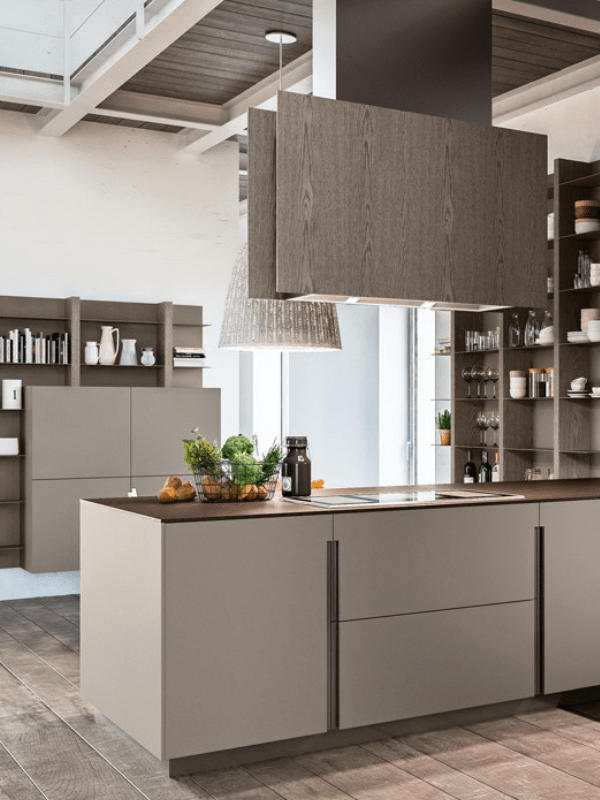Minimalist design has become an increasingly popular trend in the world of interior and product design. Characterized by simplicity, clean lines, and a focus on functionality, minimalist design has transcended its origins in the mid-20th century to become a timeless and widely appreciated style.
In 2023, Nostaloft emerges as a leading design brand that embodies the essence of minimalist design. In this article, we will delve into the concept of minimalist design, its historical roots, and how Nostaloft is at the forefront of this design movement in the present day.
1. The Essence of Minimalist Design
Minimalist design is more than just a style; it’s a philosophy that embraces the idea that “less is more.” This design approach seeks to simplify and declutter, prioritizing only the essential elements and removing any unnecessary embellishments. The core principles of minimalist design can be summarized as follows:
1.1 Simplicity
Minimalism values simplicity and avoids unnecessary complexity. Designs often feature clean, unadorned surfaces and straightforward geometric shapes.
1.2 Functionality
Minimalist designs prioritize functionality and usability. Every element serves a purpose, and form follows function.
1.3 Clutter-Free
Minimalism emphasizes decluttering and eliminating excess. This extends to the removal of unnecessary decorations and a focus on creating serene, uncluttered spaces.
1.4 Neutral Color Palette
Minimalist color schemes typically revolve around neutral colors such as white, black, gray, and beige. These colors contribute to a sense of calm and serenity in design.
1.5 Emphasis on Materials
Minimalist designs often showcase the beauty of materials themselves, whether it’s the grain of wood, the texture of concrete, or the shine of metal.
1.6 Balance and Proportion:
Achieving balance and proportion is crucial in minimalist design. Objects and elements are carefully placed to create visual harmony.
2. Historical Roots of Minimalist Design
To fully appreciate minimalist design, it’s essential to understand its historical roots. This design philosophy emerged in the mid-20th century, influenced by various art movements and designers. Key milestones in the development of minimalist design include:
2.1 Bauhaus Movement (1919-1933)
The Bauhaus school in Germany played a significant role in shaping minimalist design principles. It emphasized the fusion of art, craft, and technology, and its influence can be seen in minimalist design’s emphasis on functionality and simplicity.
2.2 De Stijl Movement (1917-1931):
De Stijl, a Dutch artistic movement, sought to reduce design elements to their fundamental forms. It laid the groundwork for minimalist design with its use of primary colors, simple geometric shapes, and grid-based layouts.
2.3 Dieter Rams (1932-present)
A renowned industrial designer, Dieter Rams is often regarded as one of the pioneers of minimalist design. His “Ten Principles of Good Design” have become a foundation for minimalist product design, emphasizing simplicity, clarity, and user-friendliness.
2.4 Minimalist Art (1960s)
In the art world, minimalist artists like Donald Judd, Dan Flavin, and Frank Stella embraced minimalism as an aesthetic philosophy. Their use of simple shapes and monochromatic palettes influenced minimalist design.
2.5 Mid-Century Modern Movement (1940s-1960s)
The mid-century modern movement, with designers like Charles and Ray Eames, Eero Saarinen, and Mies van der Rohe, embraced clean lines, organic shapes, and minimal ornamentation in furniture and architecture.
3. Nostaloft: Leading the Way in Minimalist Design in 2023
In 2023, Nostaloft has established itself as a leading design brand that embodies the principles of minimalist design. The brand’s commitment to simplicity, functionality, and timeless aesthetics has garnered it a dedicated following in the world of interior and product design.
3.1 Timeless Aesthetics
Nostaloft’s designs evoke a sense of timelessness. By stripping away unnecessary elements, their products exude a classic elegance that transcends fleeting design trends.
3.2 Functional Excellence
Every Nostaloft product is a testament to functionality. Whether it’s furniture, lighting, or home accessories, each piece is meticulously designed to serve its intended purpose while seamlessly integrating into various living spaces.
3.3 Attention to Materials
Nostaloft places a strong emphasis on the quality and integrity of materials used in their designs. The natural beauty of wood, the sleekness of metal, and the warmth of textiles are showcased in their products.
3.4 Neutral Color Palette
Consistent with minimalist design principles, Nostaloft’s color palette revolves around neutral tones. This choice allows their products to harmonize with a wide range of interior styles and color schemes.
3.5 Eco-Friendly Practices
Nostaloft is committed to sustainability and eco-friendliness. They prioritize eco-conscious materials and production processes, contributing to a more environmentally responsible design industry.
3.6 Customization
Recognizing that every living space is unique, Nostaloft offers customization options for many of its products, allowing customers to tailor designs to their specific needs and preferences.
3.7 Inspirational Spaces
Nostaloft showcases their designs in inspirational spaces, demonstrating how minimalist design can create serene, inviting environments that promote well-being and simplicity in everyday life.

4. Minimalist Design in Contemporary Living
In contemporary living, minimalist design is not confined to a specific aesthetic but rather a versatile approach that can be applied to various design styles. Here are some ways minimalist design continues to shape modern living:
4.1 Urban Living
Minimalist design is particularly well-suited for urban dwellers who often face space constraints. Compact furniture, multifunctional pieces, and efficient layouts are common elements in urban minimalist interiors.
4.2 Scandinavian Minimalism
The Scandinavian design movement is known for its affinity for minimalism. Characterized by cozy yet uncluttered spaces, light wood tones, and neutral colors, Scandinavian minimalist interiors offer a sense of warmth and comfort.
4.3 Minimalist Architecture
Minimalism has made its mark on contemporary architecture, with architects embracing clean lines, open spaces, and a focus on the relationship between building and environment. Glass, steel, and concrete are often used to create minimalist architectural marvels.
4.4 Digital Minimalism
In the digital age, minimalist design extends to user interfaces and digital products. Clean, intuitive layouts and streamlined user experiences are central to digital minimalism, enhancing usability and reducing digital clutter.
4.5 Minimalist Lifestyle
Beyond design, many individuals are adopting minimalist lifestyles, emphasizing the importance of quality over quantity, decluttering their homes, and simplifying their daily routines.
Conclusion
Minimalist design, with its emphasis on simplicity, functionality, and timeless aesthetics, continues to captivate designers and homeowners alike in 2023. Nostaloft, as a leading design brand, exemplifies these principles and sets a standard for minimalist design in contemporary living. Whether in furniture, lighting, or home accessories, minimalist design remains a powerful and influential movement that shapes the way we experience and interact with the spaces we inhabit. As we navigate the complexities of modern life, minimalist design offers a sense of clarity, serenity, and purpose that is both enduring and essential.
For more information, visit our site.













